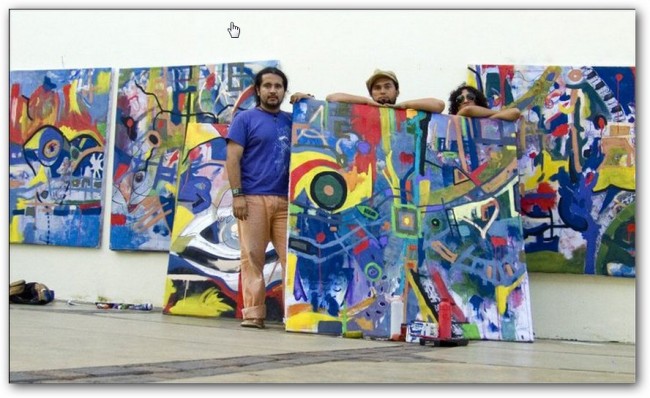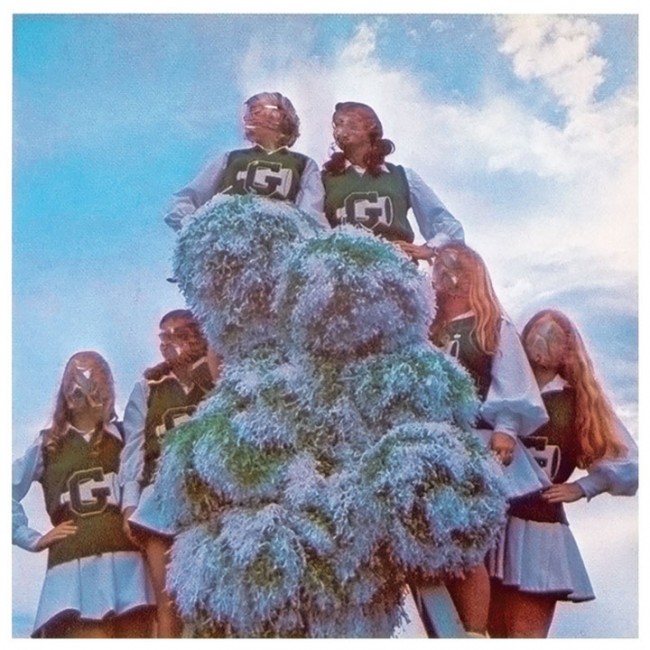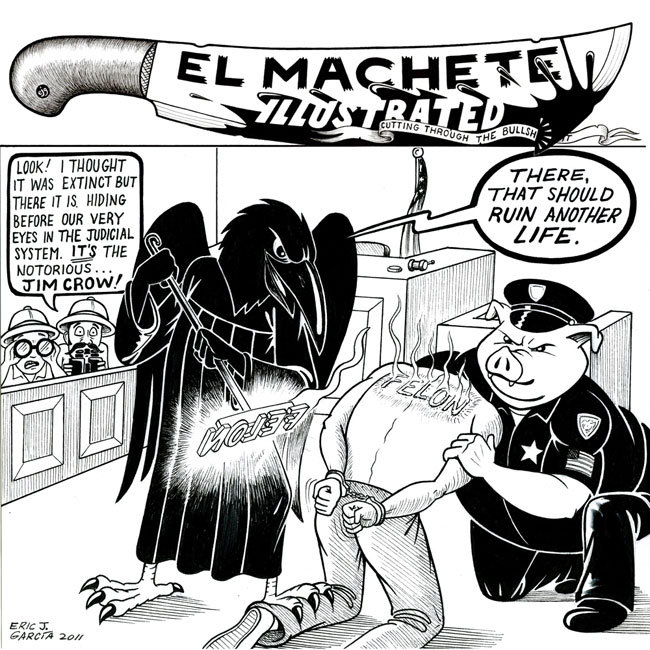For the final installment of “Emerging Art in El Salvador,” Danielle Mackey interviews Renacho Melgar, a painter and the coordinator behind the Salvadoran artist collective: Colectivo Urbano (Urban Collective). Melgar was born in 1981 in San Salvador. He identifies as a painter, because, “simply put, I love to paint and draw every day.” He is 30 years old and is from the generation that grew up on the Wonder Years, Tranzor Z and the Thundercats. He specializes in visual and body art.

Danielle Mackey: Can you tell us a bit about the origins of Colectivo Urbano?
Renacho Melgar: It all began, if you believe it, through hi5. I had recently returned to the country after having lived in Nicaragua and Costa Rica and doing an exposition in Cuba. I wanted to try something different so I contacted my friends, photographer Jorge Merino and painter Efrain Cruz, thinking that we could do a joint exhibit. I didn’t realize we’d end up building a collective together. We ended up going out for coffee and, as artists worldwide always do, we lamented the lack of space and support for local artists, along with the necessity to create something different. Without realizing it, during that long talk over multiple coffees, we had given life to a great idea. We said goodbye, planning to go out for another coffee the next week. The very next day, Jorge (Merino) called me and he’d already recorded everything that we had constructed the afternoon before. This is something that never happens: we always get together and talk about our problems and what’s going on, but this time we had a very concrete project that would be simple to fulfill. We decided to do twelve expositions during one year — one per month — with the theme always revolving around urbanity. Urban character, urban landscape, and urban still life are a few examples. That’s where the name Colectivo Urbano comes from.
DM: How did the collective grow beyond you three?
RM: From our original idea, we wanted to offer open call to all artists in the country in any area (to participate), as long as their work focused on the subject of the month. We found a curator, and we began to search for areas to exhibit outside of San Salvador, because it seems art here is always concentrated in the cities. As you’d imagine, we didn’t have money to offer, so everything relied on our own initiative and negotiations. Soon, the months passed and we had not only done the original twelve expositions, but instead twenty-five of them, and we had involved 40 different artists.

DM: What is unique about how the collective works?
RM: There have been collectives before us, but our dynamic of collective creation is what sets us apart. I’m proud to say that people are replicating our form of working. We’re not just doing awareness-raising with society, but we’re also making them a part of our creation processes with our urban interventions. We try to involve the public in the moments of creation and development, so that it’s truly our art. All this effort has garnered us legitimacy with different generations in the art world and with the media.
Over the past three years, we have changed our working dynamic in some ways, but we always keep clear that we do everything collectively, and our support and effort goes to emerging places [in the art world]; that’s where people call us to be. This is the only way to change the art world in this country, where we tend to go through moments brimming with cannibalism and others characterized by a stupid intellectualism. Our priority is simple: we want to construct a different proposal for art, and I’m being sincere here. This will be a space where we all fit and where all struggles come together; and, above all, this will be a space where we dare to destroy and construct our daily realities through art — including art itself. Even art must be destroyed so that we can rebuild it.








Renacho Melgar gets money from foreign people and won’t send the paid art. I think this is not a good cultural way, to spread art. The word spread under european artist, that he is a crook and trickster. Sorry for this, but don’t present such people who wants to be artists. Maybe for San Salvador it’s ok. Get more serious! Viva la Art!